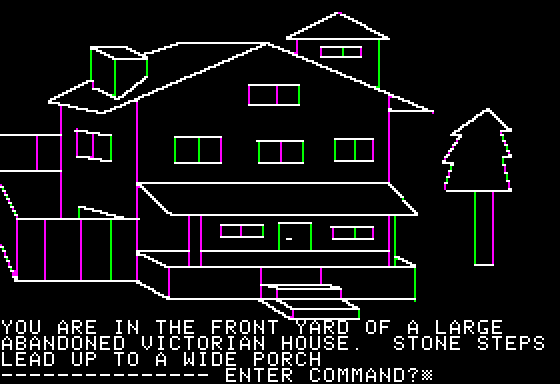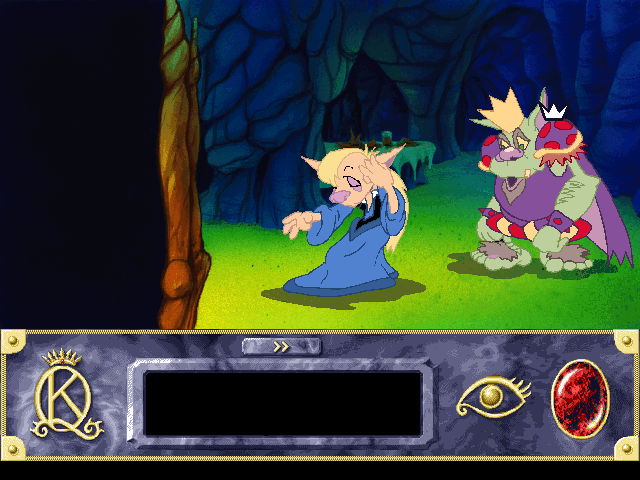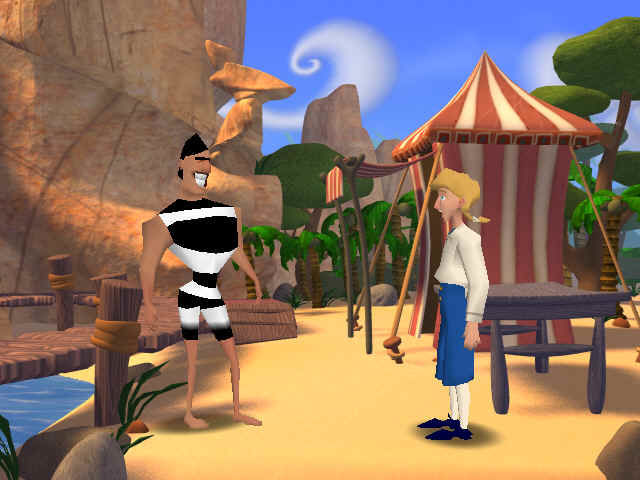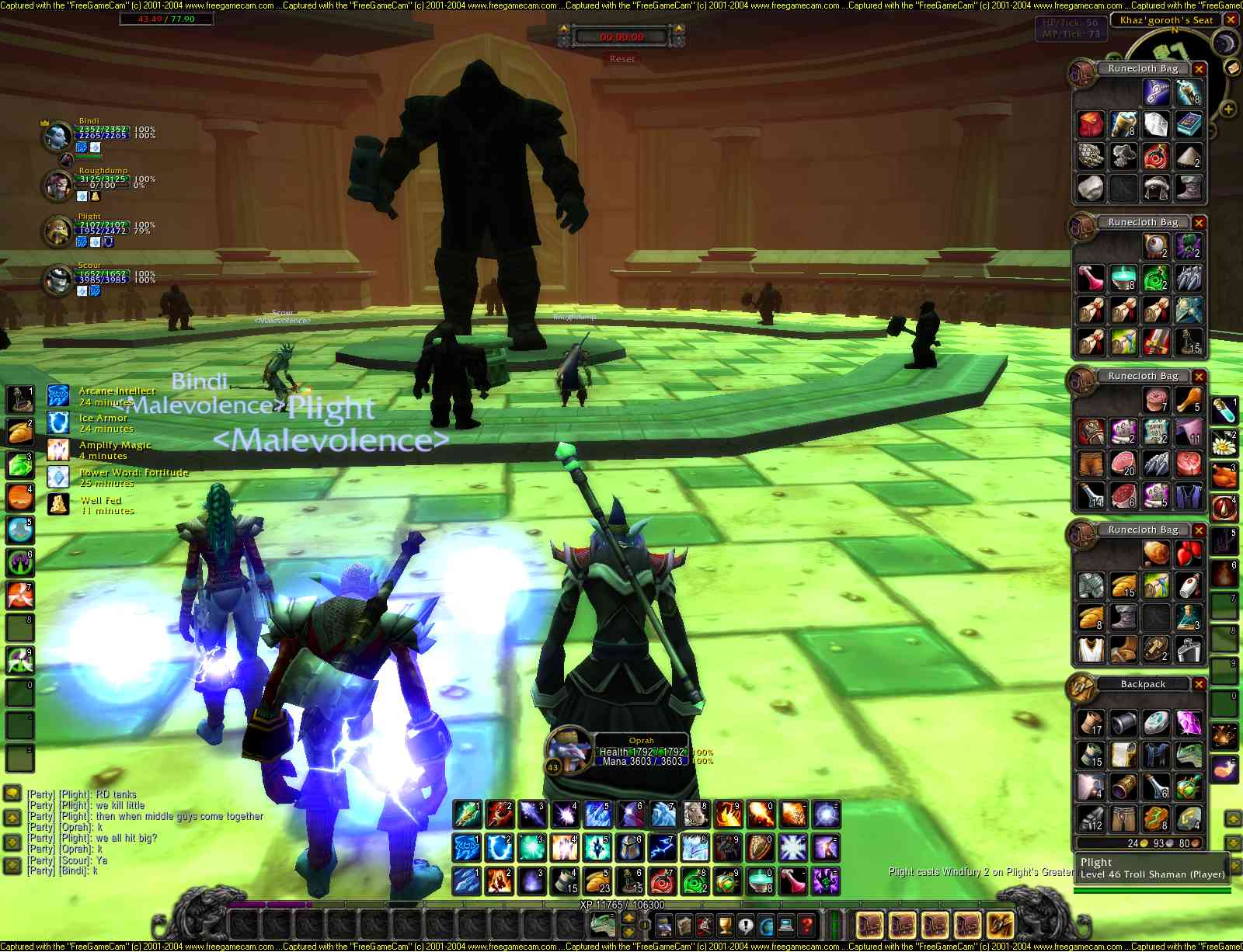Adventure games arrive
Both movies are examples of one aspect of human kind's fascination with computers – the ability of a computer environment to simulate reality. Nowhere is this more prevalent than in the computer games arena. In 1976 one of the earliest computer games was the hugely successful Colossal Cave Adventure written in Fortran for a mini-computer called the PDP (a mini computer was "mini" compared with mainframes). "Adventure", as the game came to be known, swiftly moved to other platforms – Unix workstations and eventually MS-DOS-based PCs in the early 1980s. This was a text-only game that began with the message WELCOME TO ADVENTURE!! WOULD YOU LIKE INSTRUCTIONS? and whose game play started with YOU ARE STANDING AT THE END OF A ROAD BEFORE A SMALL BRICK BUILDING. Game play comprised typing short instructions as you explore the world, building up a picture of it through the descriptions. It spawned many copies in the late 1970s, and in 1980 the first graphic adventure game, Mystery House, was released by the games company Sierra (for the Apple: PCs weren't ready yet). Now people could see the worlds they were exploring, and numerous off-shoots were created including Sierra's famous King's Quest (1984 to 1998) and Space Quest (1986 to 1995) series.As the PC platform expanded, PCs became more affordable, and graphics capabilities improved, the graphics experience became more refined. The next few screenshots demonstrate.
| Sierra's Mystery House, released in 1980 for the Apple II | |
 | Sierra's King's Quest, released in 1984 for multiple platforms including the Apple, PC and Tandy |
| Sierra's King's Quest VII, released in 1994 for the PC and Apple | |
| Lucas Arts' Escape from Monkey Island, released in 2000 for the PC, Mac and Playstation (2001) | |
| Lucas Arts' Lego Star Wars II: The Original Trilogy, released 2006 for multiple platforms including PC, Mac, Xbox and PS2 |
Although this trend allowed computer games to become ever more graphically rich (and therefore realistic), and thus ever more immersive, they suffered from a major defect. Ironically the movie Tron emphasised this by making its "virtual" characters more real – investing them with character, intelligence and even emotion. But our hero never forgets he is essentially in an unreal virtual world and that all the "people" he interacts with are not real. The Matrix movies turn this on its head because the virtual world of the Matrix is both more compelling and more enriching (at least superficially) than the real world. The key difference is that the people in the Matrix are real in the sense that they are the avatars of real world human beings. This is what the ever-richer graphic environments were missing: the play was single-mode.
Multi-user games
This hadn't gone unnoticed. Even back in the early 1980s when adventure games were still text based, the idea of a multi-player environment quickly emerged. They grew initially from the popular Dragons and Dungeons board games, so the original multi-player computer versions were called MUDs – Multiple User Dungeons – the first game appearing in 1978 and actually called MUD. This was based on the popular adventure game Zork, itself a derivative of the original Adventure. Like its predecessor it was written for the PDP mini computer. Like the single-player games, a similar path of graphical enrichment followed, but the genre developed more slowly because the Internet did not become widely accessible to the public until the 1990s, and even then truly rich graphical environments lagged due to low bandwidth. However with growing bandwidth both the richness of the environment and the numbers of players increased. MUDs became Massively Multiplayer Online Role-Playing Games (MMORPGs). Following the Dungeons and Dragons model, the games often centred on magical, mystical worlds and the first MMPORG Ultima Online (1997) epitomised this. At its height it had 250,000 subscribers. Today online games like Everquest (1999) and World of Warcraft (2004) are the inheritors of this trend – World of Warcraft currently enjoying more than 10 million subscribers and generating millions of dollars of revenue.Blizzard Entertainment's World of Warcraft v3 (v1 released 2004) for Mac and Windows
These games enjoy the rich graphical environments described earlier, plus the experience of playing with and against real people (or at least people-controlled avatars). And because they are a virtual world, the avatars can be personalised – so it's you playing (in) the game, not a Star Wars character or a Lara Croft.
So compelling are these environments that we are seeing a new emerging phenomenon of Internet game addiction. This hasn't been well researched yet, so statistics are not very prevalent. A 2007 Harris poll concluded that 8.5% of US youngsters showed addictive online gaming behaviours and in 2006 the BBC reported a rate of 12% from a survey of 7,000 people. At the extreme, there have been a number of deaths related to exhaustion from playing games for too long without food and rest. In Jinzhou, China, Xu Yan died after playing online games continuously for over 15 days during the Lunar New Year holiday of 2007. Lee Seung Seop of North Korea died after playing Starcraft in a non-stop, 50 hour gaming marathon in 2005.
Why is it that computer generated "virtual reality" can be so immersive and so compelling? Perhaps its because at heart we are virtual reality creatures anyway. By this I mean that everything we experience has to be modelled in our brain. The things we see, hear, touch, smell and taste are all converted into electrical and chemical impulses that travel through our body to the brain where this information is processed into what we perceive as "reality". So used is our brain to doing this that it even creates experiences for us when we're not physically involved – i.e. through dreams. Is it any wonder, then, that our brains are so easily "fooled" by computer generated realities?
There is a positive side to this (beyond the mere entertainment value of games), and this is a subject I'll return to when I go on to look at world simulation virtual realities in my next post.





No comments:
Post a Comment